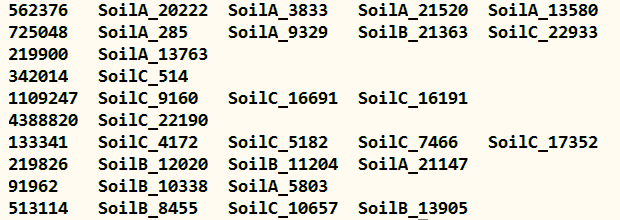See also
Making an OTU
table (otutab command)
Downstream analysis with
QIIME
QIIME maps are tab-separated text files used to store an OTU table. This format is generated by the pick_closed_reference_otus.py and pick_open_reference_otus.py scripts, which also generate OTU tables in BIOM format.
The qiimemap2otutab command converts a QIIME map file to QIIME classic format.
With pick_closed_reference_otus.py, the map file is dir/uclust_ref_picked_otus/name_otus.txt, where dir is the directory name specified by the -o option and name is the input file name (truncated by rules that are not quite clear to me, e.g. the filename extension is deleted). With pick_open_reference_otus.py, there are two map files: dir/final_otu_map.txt and dir/final_otu_map_mc2.txt. The first contains all reads. The second has singleton OTUs deleted (mc2 means "minimum count 2").
Each line in the file represents one OTU. For closed-reference OTUs, this is an integer accession number from the GG97 database. The OTU identifier is followed by a tab-separated list of read labels. Each read label starts with the sample name followed by an underscore and the read number.
Example QIIME map file
